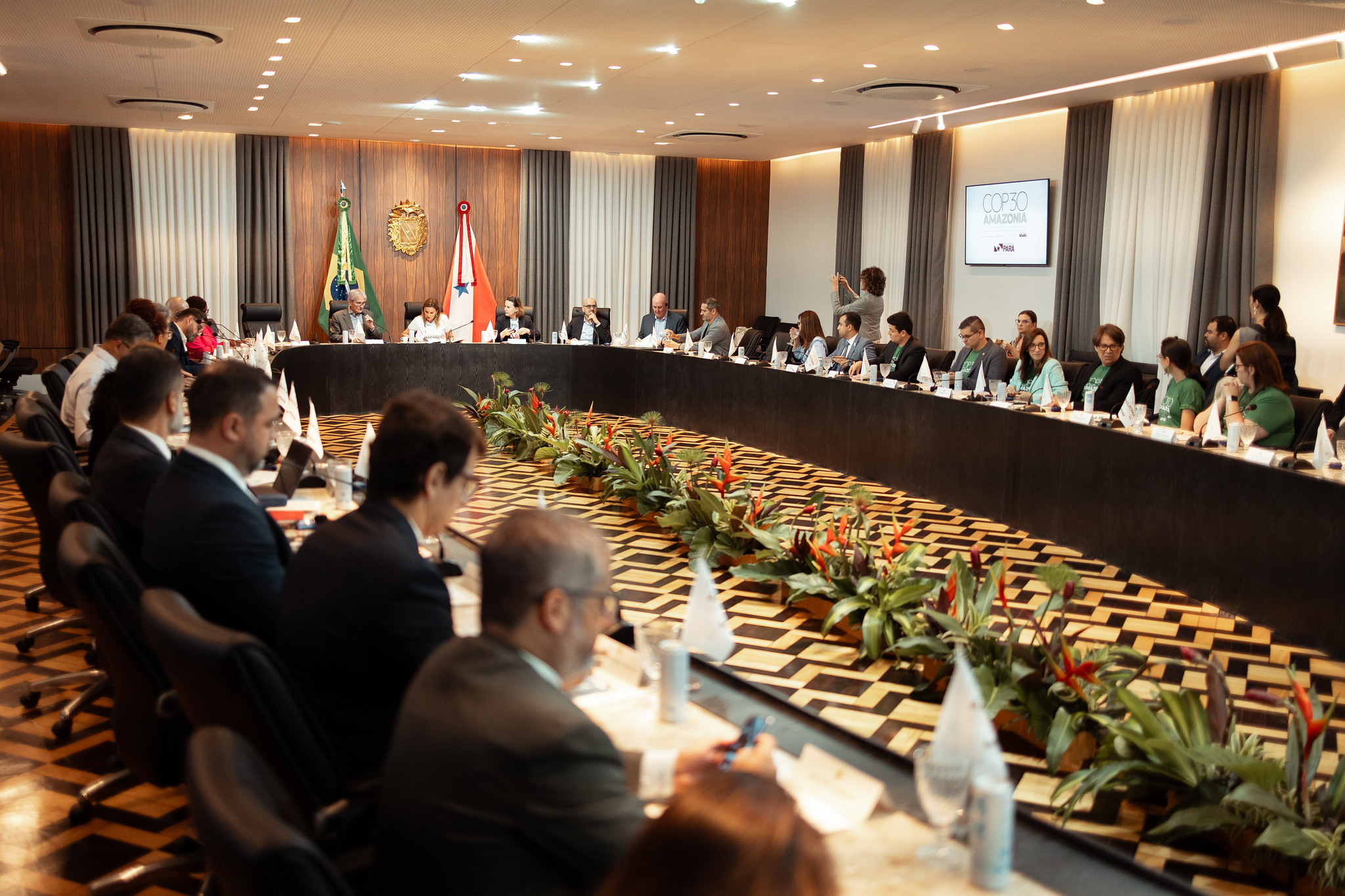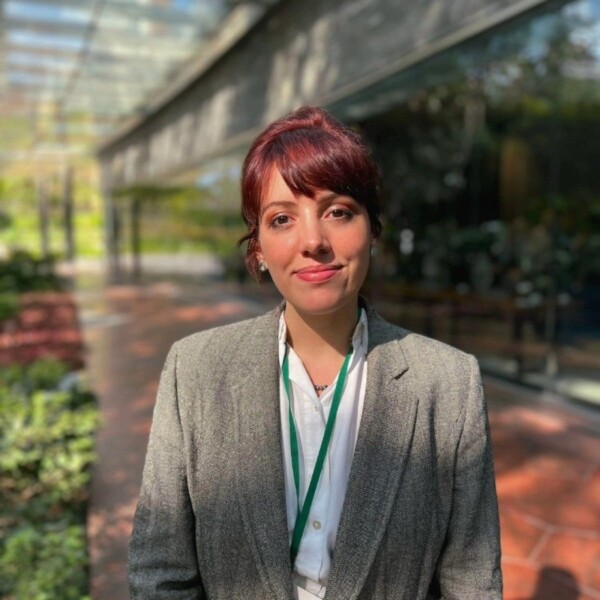
UN mission visits preparations for COP30 in Belém. Photo: Isabela Castilho/COP30
In the opening media briefing of The Belém Desk — a new international journalism cohort created by N4C, iCS, TNC, and UNEP — John Verdieck, Director of International Climate Policy at The Nature Conservancy, outlined the COP30 negotiation landscape, stating that financing climate action will be the most challenging topic to advance in Belém.
Verdieck explained that the $1.3 trillion New Collective Quantified Goal (NCQG) agreed at COP29 now needs a clear roadmap for implementation.
“I see the COP as two parallel worlds: one inside the negotiation rooms of the blue zone, where governments discuss texts and targets; another, outside these rooms, where different organizations try to influence the course of decisions. There are divergences between developed and developing countries about their priorities in each of these spaces. Often, balance is needed to reach a comprehensive agreement — and this will be a difficult task for the presidency,” he said.
However, the climate policy expert also emphasized that Brazil has a strong track record in diplomacy, which could help countries find common ground in Belém to finance action and implementation. You can read the highlights of his participation below:
Read more
Related articles for further reading
Where we left off at COP29 and what to expect from COP30?
We are heading to a COP in the heart of the Amazon, returning to the place where these conventions and ideas were born. The science is clear: we need to do more. Humans need to do more. We are seeing the repercussions of climate change and biodiversity loss all over the planet, wherever we live.
This will also be an important year as it marks part of the five-year cycle of the NDCs (Nationally Determined Contributions). Countries need to deliver their plans to fulfill the Paris Agreement promises ahead of the conference, and this will give us — and the Brazilian presidency — a clearer view of whether the submitted NDCs are ambitious enough.
We can expect that one of the biggest challenges in the COP30 negotiations will be financing.
At COP29, there was an important breakthrough: the agreement on the New Collective Quantified Goal (NCQG). This financial commitment includes two values: $1.3 trillion, representing global climate finance, and $300 billion, allocated from developed countries to developing countries. This difference is enormous.
As civil society, journalists, and citizens, we need to think about how to transform these $300 billion into levers for solutions and financing that will lead us to the $1.3 trillion per year that will be needed. And even this amount may not be enough to address the climate and biodiversity crises.
We will need actions in various sectors: agricultural, energy, governmental, and financial. We need to integrate our economy with climate commitments. This will be central to financial negotiations: what tools and modalities can we use?
The discussions will continue not only at the COP but also in preparatory meetings, such as the one that will take place in Bonn, Germany this month. We expect progress in high-quality carbon markets for trade between countries.
How crucial will adaptation be for this agenda?
Historically, only 10% of climate finance has been allocated to adaptation, partly because it is difficult to measure its results. Unlike mitigation, where emission reductions are measured, adaptation involves health, livelihoods, and other aspects that are difficult to quantify.
We need to develop indicators and financial mechanisms that incentivize good practices in adaptation. And there are still pending discussions on loss and damage. For The Nature Conservancy, nature plays a fundamental role in this issue, especially in coastal areas.
I see all this as a kind of Olympics: different events happening simultaneously — running, jumping, judo — and the presidency will have to find a common language that unites all this. We need to reduce fossil fuels, increase positive incentives, reduce negative ones, and build a package that allows us to move forward.
Can we turn adaptation into a business case? Can COP30 send the regulatory signals to make this possible?
One of the challenges with UN conventions is their mandate — they often don’t have the authority for that. It would likely be a decision for the private sector or individual governments.
Let me share two points. First, governments work through NDCs, so each country — or even state governments — sets its own regulations. But recent financial reports show that the longer we delay adaptation actions, the more expensive they become. A company thinking about investing for the next 10, 20, or 30 years will realize it’s cheaper to act now. I hope case studies will start to show this as return on investment, helping companies make decisions.
Negotiations on adaptation are ongoing, with many indicators being discussed. Some may serve as a basis for private investment. The Green Climate Fund and the Global Environment Facility, for example, assess how many people are benefited and what adaptation measures are being adopted. Many climate finance flows will be tied to these indicators.
But COP likely won’t be the forum to define this directly. What’s important is that the negotiations bring good indicators, and now we have too many of them under discussion — over 400. We need to reduce that number to make them more useful and applicable.
Can nature-based solutions be considered a strategy to mitigate land conflicts?
Land conflicts occur all over the world, and our hope is to build broader frameworks that demonstrate legality. Land tenure systems need to recognize the longstanding presence of local communities and Indigenous peoples. This should also benefit the government, which can operate within these frameworks.
We’ve seen this happen in several places, where different groups come together and find ways to use the land’s potential while also conserving it. One example I can mention is the state of Pará, in Brazil, where COP will be held this year. The Nature Conservancy has been working with the government, other organizations, and the private sector on cattle traceability. This brings together ranchers, the government, and financial mechanisms.
The idea is to create incentives for ranchers to access new markets where they can sell higher-value products that meet environmental requirements. We are building a financial mechanism that works for local communities, workers, farmers, and ranchers — and also benefits the government. We know each country and community has its own particularities, but the hope is to create structures that encourage everyone to work together.
